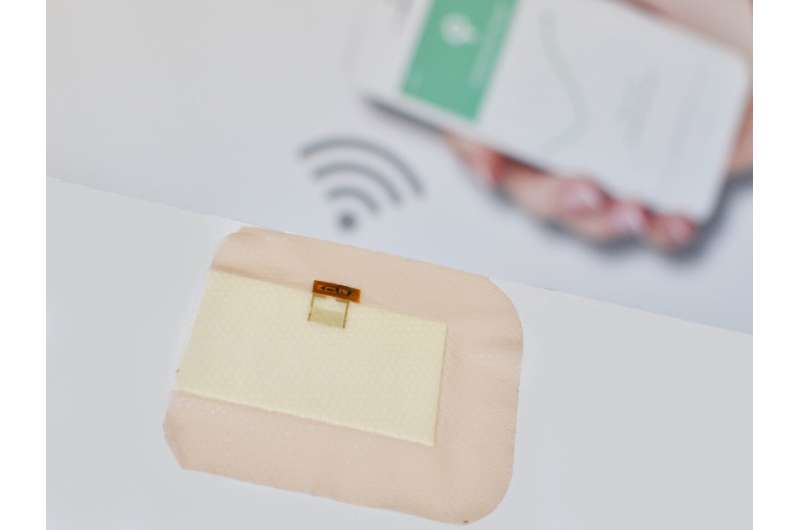Credit: Grapheal
Chronic or hard-to-heal wounds, those that do not heal after six weeks, place a significant economic burden on health systems around the world, costing around $30 billion annually. They lead to half-a-million amputations per year globally. In the United States alone, more than 6.5 million people suffer from such wounds.
The costs and incidence of chronic wounds are increasing due to the growing number of older people, among whom pressure ulcers and leg ulcers are more common, and the increase in people with diabetes, who are more prone to foot ulcers.
Faced with this problem and considering that proper assessment of these wounds is not within the reach of caregivers with the relevant expertise, Graphene Flagship scientists in France have developed a new graphene patch that allows them to be monitored remotely.
"The conductivity of the Graphene electrode varies according to the physicochemical changes in the wound, so we have produced films of this material on a polymer (a plastic) and integrated them into a bandage that can record biological parameters by direct contact with the wound bed," explains Vincent Bouchiat, CEO of Graphene Flagship Associate Member Grapheal, a spin-off from France's National Centre for Scientific Research (CNRS). Grapheal is based at Néel Institute, in Grenoble, where this technology was developed.
A smart, connected dressing
The graphene dressing is ultra-flexible, adapts easily to any part of the body, and has tiny wireless electronics (with lightweight, fully flexible electrodes) that transfer the data to a mobile application. Then, using a telemedicine software and medical technologies in the cloud, the information can reach the hospital to be monitored and evaluated by a specialist.
Medical and nursing staff can remotely monitor how wounds are healing with this system, receiving alerts on any infection that may arise, which helps to prevent complications.
"This can improve and individualize the treatment of chronic wounds that require long-term care," says Bouchiat, who emphasizes: "In particular, it provides an early detection of infections, allowing a hospital solution at home."
Stimulating healing
The incorporation of graphene into skin patches of these types not only does not interfere with wound healing, but in fact can actually promotes it, actively stimulating this process, as demonstrated by the pre-clinical studies that have already been conducted.
The first human trials are about to begin. This medical device has been classified as class II-b (such as condoms or insulin pens, for example) and requires the European mark of conformity. Its launch is planned for 2023.
The creators of the patch had intended to present it in February, along with other projects of the major European initiative known as the Graphene Flagship, at the Mobile World Congress in Barcelona, which was canceled to prevent the spread of the coronavirus.
In this context, the researchers point out that this new graphene device will be able to help monitor the chronic wounds of isolated people, such as those who have now been forced into this situation by the COVID-19 pandemic.
More information: Graphene Flagship: graphene-flagship.eu/
Provided by CORDIS
























